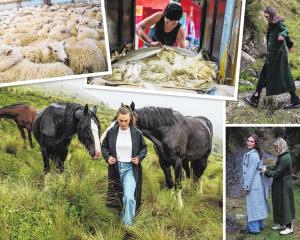
Green Island have opted out of the Southern League next season, leaving the Dunedin City Royals as the sole representatives of the region in the league.
The Southern League was established in 2021, involving 10 teams from Nelson to Dunedin playing 18 home and away games, after which the top two qualify for the National League.
A replacement team, not from Dunedin, will be named before the season and the format will remain the same.
Green Island president Roxanne Koni said it was a tough decision for the club to leave the league.
"This was a decision that took months of consideration and exploring all avenues to maintain our position," Koni said.
It came down to the sustainability of the club, internal resources and depth of their player development.
She understood New Zealand Football was working towards adapting the league to remain sustainable, but there were a lot of requirements placed on clubs to maintain their position in the league.
"The future relies on how far those requirements extend to and what support is provided to clubs so they can achieve these."
McGowan was disappointed Green Island had left the league.
"It’s a real shame," McGowan said.
"One of the things you hope for is that there are pathways within our environment for people to be able to play the game at the level that is appropriate for them and to have a choice of the type of club they want to be part of — very sad in that way."
It highlighted the pressure of playing at a high level, including the financial costs.
Entry fees for the men’s national leagues, including the Southern League, are $10,000 plus GST.
Fees for the women’s national league are also $10,000 and the youth development leagues are $6100.
Those fees paid for flights and other necessities, but did not cover the additional costs.
Clubs also had fees for their other teams in various leagues, club licences, coaching qualifications — all putting significant pressure on clubs, McGowan said.
"It means that if you’ve got a senior men's side in the South Islands, and then a men’s side in the Southern Premier League, and then a women’s team in the South Island league, you’re looking at entry fees just for those three teams ... close to $30,000.
This was "quite significant for a club to be able to find during that period of time".
Asked if there was more New Zealand Football could do to support teams, McGowan said Southern Football continued discussions with the national organisation.
Southern Football supported the clubs and hoped another Dunedin team could rejoin the league in the future, he said.
In a statement, New Zealand Football said the national league system was revamped to create a sustainable competition and feedback had been "overwhelmingly positive".
"The Southern League, one of the three regional leagues that make up the initial phase of the competition, is subsidised by New Zealand Football with a number of costs, such as all travel costs for the season, covered as part of the entry fee.
"The league offers a truly open pathway where the best sides from across Aotearoa New Zealand can compete for national and international honours."












